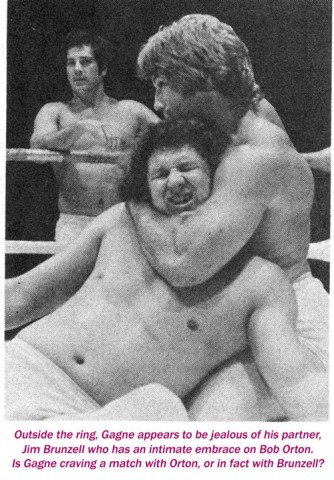 In a blog a couple weeks ago, the abundance of men in pro wrestling was explained as a portrayal of male “homosocial” relationships (which the male wrestling fans enjoy seeing and crave themselves). The next week, we considered how a Tag Team demonstrates the concept of “male homosocial desire” — the longing all men feel to be around and bond with other men (and to benefit from their male-on-male relationships.)
In a blog a couple weeks ago, the abundance of men in pro wrestling was explained as a portrayal of male “homosocial” relationships (which the male wrestling fans enjoy seeing and crave themselves). The next week, we considered how a Tag Team demonstrates the concept of “male homosocial desire” — the longing all men feel to be around and bond with other men (and to benefit from their male-on-male relationships.)
The problem with relationships between straight men is that, as their mutual intimacy grows, the specter of homosexual desire can rear its ugly head. Yes, men are encouraged to become pals and help each other succeed (the very purpose of homosocial relationships), but intimacy and romantic love are strictly forbidden by our straight male-dominated society.
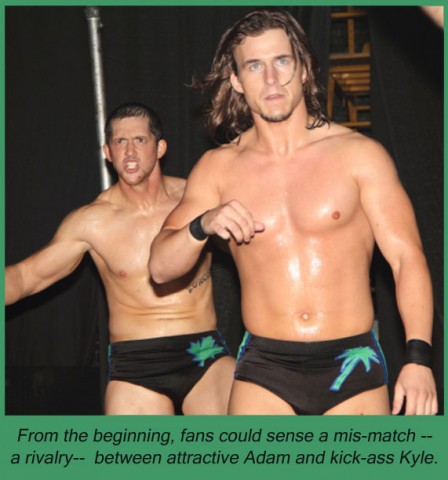 So when a man feels his buddy is getting a bit too clingy, or if he senses a growing romantic interest in a pal, he experiences “Gay Panic” (the fear of society’s punishment) and will try to withdraw from the relationship.
So when a man feels his buddy is getting a bit too clingy, or if he senses a growing romantic interest in a pal, he experiences “Gay Panic” (the fear of society’s punishment) and will try to withdraw from the relationship.
Feminists believe that the way two straight men can maintain their bond while averting the threat of gay panic is by bringing a female into the mix and forming a Love Triangle.
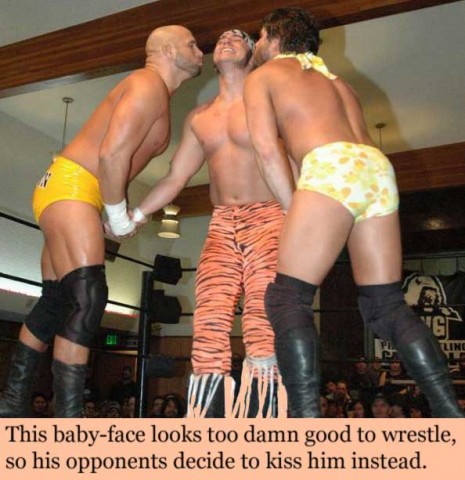 The theory is that, in the traditional love triangle betweeen two males and a female (which I refer to as the “M-F-M Triangle”), the true desire, the stronger sexual attraction, is between the two men. The female is just a surrogate, an object of exchange. She is included in the mix to mask the true feelings between the men. Whatever they each do to her, they truly mean to do to one another.
The theory is that, in the traditional love triangle betweeen two males and a female (which I refer to as the “M-F-M Triangle”), the true desire, the stronger sexual attraction, is between the two men. The female is just a surrogate, an object of exchange. She is included in the mix to mask the true feelings between the men. Whatever they each do to her, they truly mean to do to one another.
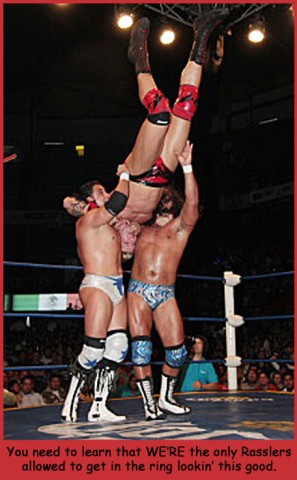 Many classic stories and movies depict M-F-M Triangles with tons of homosocial and homoerotic sub-texts between the two men involved. Society doesn’t permit the men to be intimate directly with each other, so they both forge a romantic relationship with the same female, who is a commodity, a measuring stick for the men to compare themselves and to bond.
Many classic stories and movies depict M-F-M Triangles with tons of homosocial and homoerotic sub-texts between the two men involved. Society doesn’t permit the men to be intimate directly with each other, so they both forge a romantic relationship with the same female, who is a commodity, a measuring stick for the men to compare themselves and to bond.
Any rivalry between males enables the two men to strengthen their homosocial bond (while safely averting Gay Panic), to identify with one another, to emulate and measure themselves against a (beloved) rival.
So you can’t give your buddy a hug? OK, crush him at bowling, or darts, or table tennis instead. Not allowed to hold his hand? OK, challenge him to an arm wrestling match.

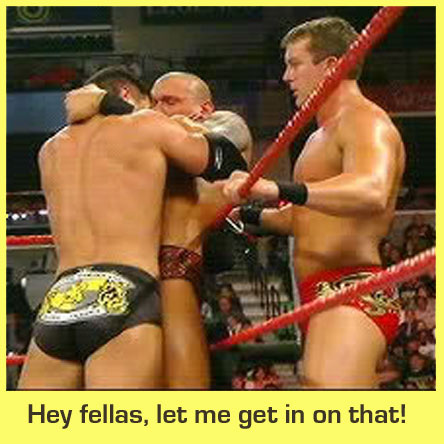 I believe the typical Tag Team match where two men work together to trap and destroy one isolated opponent is meant to portray a love triangle similar to the traditional M-F-M Triangle — only instead of having sex, they’re seen wrestling, and instead of a Female, the third party in the triangle is a jobber.
I believe the typical Tag Team match where two men work together to trap and destroy one isolated opponent is meant to portray a love triangle similar to the traditional M-F-M Triangle — only instead of having sex, they’re seen wrestling, and instead of a Female, the third party in the triangle is a jobber.
When Tag Team partners work together (usually taking turns) to dominate a helpless victim, they are like two males competing over one female. The helpless wrestler, suffering the alternating attacks of the two partners, represents the female — the “Other”, the submissive victim, the commodity — being used by the two men to express their buried feelings for one another.
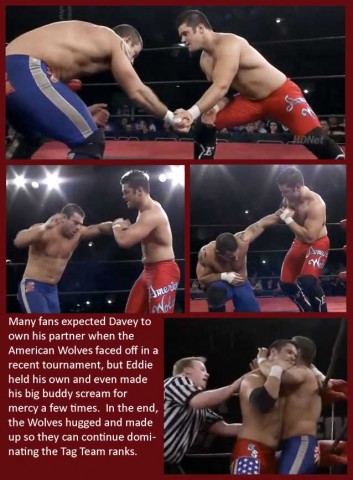 Notice how two Tag Team partners almost never wrassle against each other. That would seem too gay. If they ever do face off, it’s a Big Deal — a rare and exciting treat.
Notice how two Tag Team partners almost never wrassle against each other. That would seem too gay. If they ever do face off, it’s a Big Deal — a rare and exciting treat.
The way pro wrestling averts any potential Gay Panic from the male viewers (who are clearly very interested in seeing male homosocial relationships) is by pitting Tag Team partners against another team in nearly every case — almost never against each other.
The fans can enjoy the very powerful, intimate, successful homosocial bond between the teammates, who transfer their physical intentions onto the body of the third party, the opponent, the symbolic Female.
Wrestling, after all, is a metaphor for sex (or at least looks pretty sexual), so when the bell rings and one of the partners locks up with the submissive Tag Team opponent (the mutual object of the two men’s interest), it’s like he’s having a Booty Call session. It almost seems like he’s cheating on his own partner with the victim in the ring.
Then, the two partners (or rivals) switch places, and the other man gets intimate with his own partners’ leftovers. Jealousy ensues and the man watching from outside the ring soon wants to get in the ring again and get it on. Is it any wonder that so many people find Tag Team wrestling to be arousing when this perverse, seedy subtext is being acted out before our eyes?!
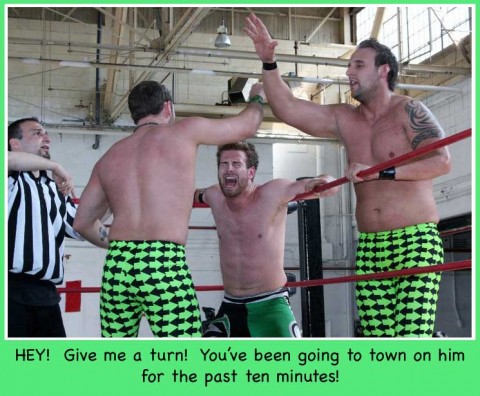 Tag Team partners will often dress identically, which emphasizes the potential bond and rivalry between them.
Tag Team partners will often dress identically, which emphasizes the potential bond and rivalry between them.
When we see any two items that look similar, the obvious reaction is to compare and contrast them, to measure them against each other.
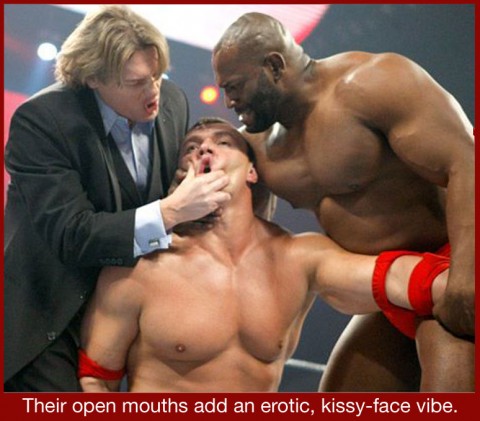 The two men in a traditional M-F-M Triangle are rivals over the love and affection of the female; the men in a Tag Team compete to see which one can pin, dominate, or “own” their one isolated opponent in the ring.
The two men in a traditional M-F-M Triangle are rivals over the love and affection of the female; the men in a Tag Team compete to see which one can pin, dominate, or “own” their one isolated opponent in the ring.
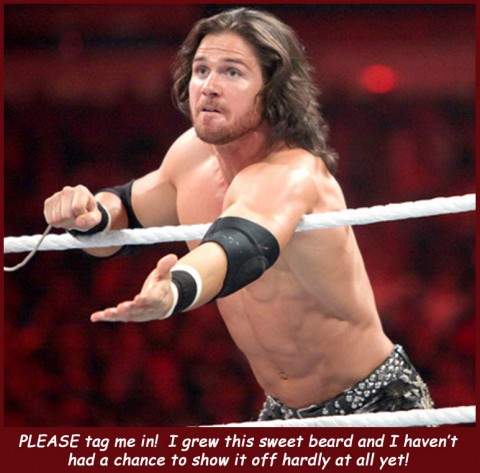 When watching a Tag Team match, I have always enjoyed seeing the partner outside the ring, waiting anxiously, reaching for a tag. I’ve never understood (until, perhaps, now) why the excited partner straining against the ropes to get into the action, can be so exciting to see!
When watching a Tag Team match, I have always enjoyed seeing the partner outside the ring, waiting anxiously, reaching for a tag. I’ve never understood (until, perhaps, now) why the excited partner straining against the ropes to get into the action, can be so exciting to see!
When the camera captures his eager expression, his tense body, his boot propped on the bottom rope, or even his back as he leans eagerly over the ropes, a Love Triangle is implied. The seeds of an under-current of potential homosexual longing for his own partner are planted in the viewers’ thoughts, and the viewers find themselves on the edges of their seats, eager to witness how this tangled web of attractions and affections will play out between the two “Men” and their shared bitch.

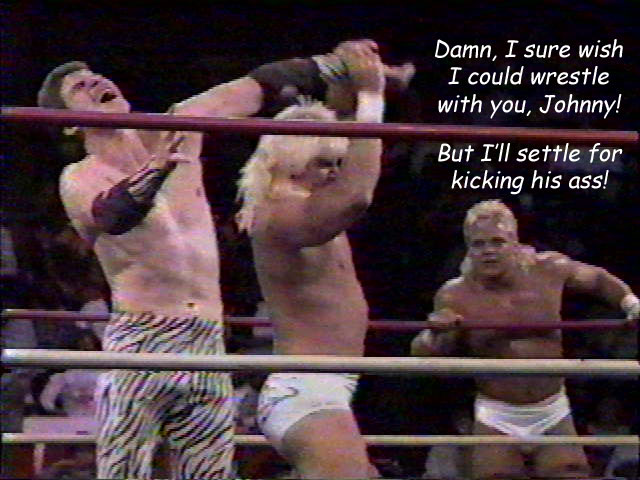
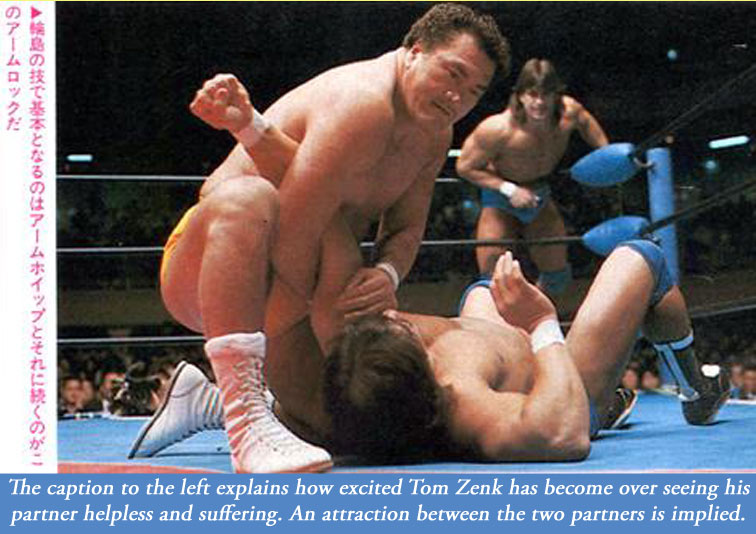
Who are the dudes in the arrows tights?